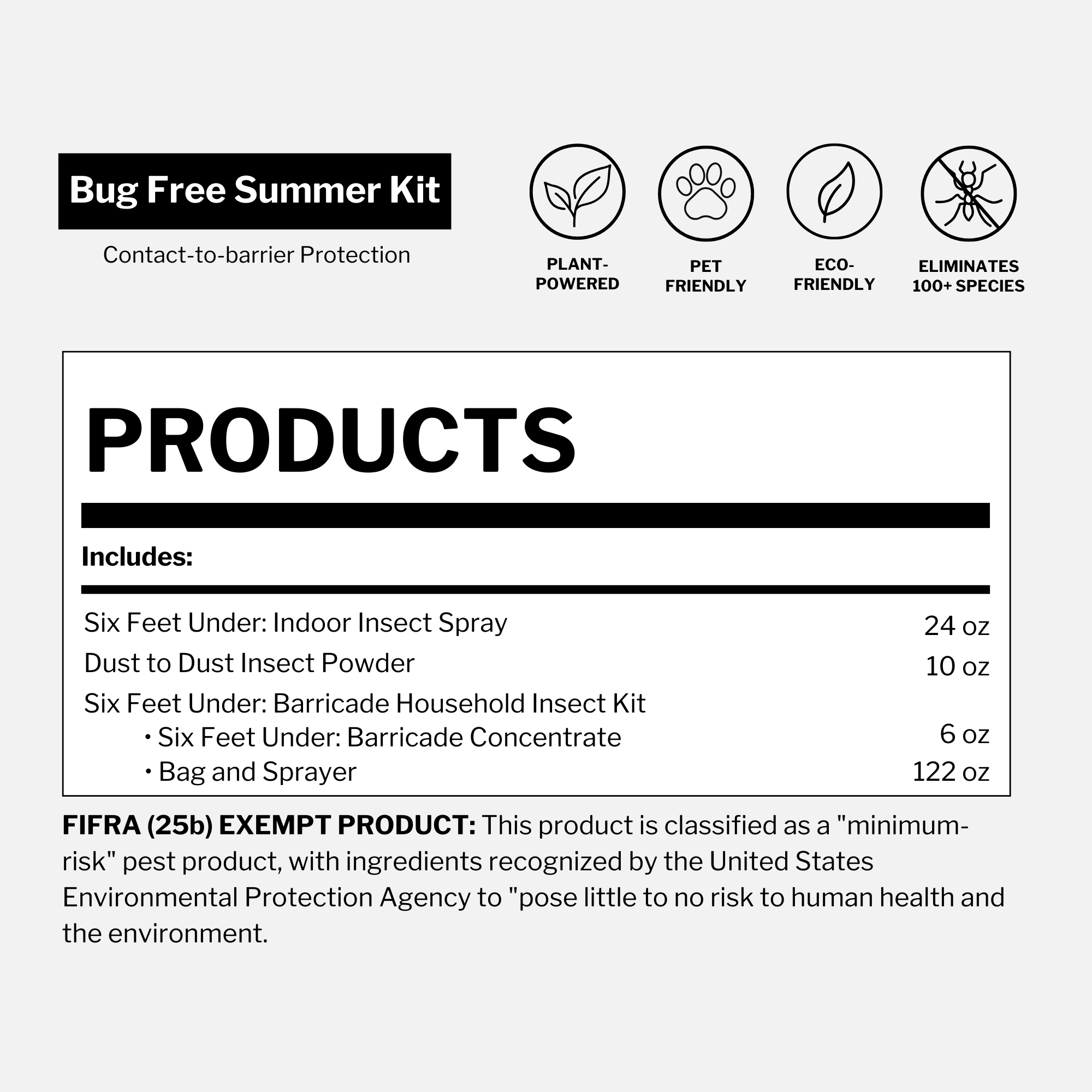Updated on May 13th, 2025
Ladybugs may be charming to look at, with their round bodies and bright, spotted shells, but they’re more than just garden eye candy. Known for their voracious appetites and beneficial role in pest control, ladybugs are one of nature’s most effective allies in maintaining plant health.
A ladybug’s vivid colors aren’t just decorative—they serve as a built-in defense mechanism to deter predators. Some species can even release a foul-tasting yellow fluid (their hemolymph, or “blood”) from their hind legs as a further deterrent.
But what do ladybugs eat and how does their diet support such a powerful ecological role? From aphid-hunters to leaf-nibblers, the ladybug diet varies significantly across species, life stages and environments. In this guide, we’ll explore everything from carnivorous to herbivorous feeding habits, plus how their diets shift from larva to adult—and even what ladybugs eat indoors.
Four fascinating facts about ladybugs
Before we dive into the details of the ladybug diet, here are four surprising facts about these colorful insects:
-
Ladybugs are natural pest controllers. These colorful beetles are best known for eating aphids—tiny, soft-bodied insects that damage plants. Carnivorous and omnivorous ladybugs can devour thousands in a season, making them one of nature’s most effective forms of organic pest control.
- Orange ladybugs are more toxic. These are usually Asian lady beetles and contain higher levels of defensive toxins. While not dangerous to most people, they can trigger allergies in sensitive individuals.
- Ladybugs can nip. While not aggressive, some ladybugs will pinch with their mandibles or back legs, especially if threatened or handled.
- Harlequin ladybugs overwinter indoors. Also known as Asian lady beetles, these invasive species often seek shelter inside homes when the weather turns cold.
What do ladybugs eat? A guide to their diverse diet

Do ladybugs eat aphids?
Yes—especially carnivorous and omnivorous species. A single adult ladybug can consume up to 50 aphids a day and over 5,000 in its lifetime, making it one of the most effective natural predators in your garden. Aphids rarely move when approached, making them an easy and satisfying meal.
But aphids aren’t the only item on a ladybug’s menu. With over 5,000 species worldwide, ladybugs have highly diverse diets. Depending on the species, they may be carnivores, herbivores or omnivores—each adapted to different environments and food sources.
Carnivorous ladybugs
Carnivorous species—like the seven-spotted ladybird, Asian lady beetle, two-spotted ladybug and pink ladybug—are garden heroes. These natural predators are known for actively hunting soft-bodied pests and are frequently introduced as biological pest control in both gardens and agricultural settings.
So, what bugs do ladybugs eat? Here’s what makes up the core of a carnivorous ladybug’s diet:
- Aphids
- Scale insects
- Mealybugs
- Leafhoppers
- Mites
- Insect eggs
- Other ladybugs (in rare cases)
Natural aphid control tip: Use Dust to Dust—a plant-powered powder made with silica and essential oils—to target aphids naturally. It breaks down their exoskeletons and helps strengthen plant cell walls. Apply to leaves and stems, but avoid blooming areas during peak bee hours (late morning to afternoon).
Herbivorous ladybugs
Not all ladybugs are predators. Herbivorous species—such as the squash lady beetle, identifiable by its 14 black spots—prefer plant-based meals. Their diet includes:
- Leaves
- Fruits
- Seeds
- Lettuce
- Fungi and mildew
- Nectar
- Pollen
- Honeydew (the sugary excretion from aphids)
- Plant sap
These ladybugs also drink dew or water droplets to stay hydrated—especially in warmer weather

Omnivorous ladybugs
Roughly 90% of all ladybug species are omnivores, meaning they consume both insect prey and plant-based foods. These flexible feeders—like the sixteen-spotted ladybug—eat aphids, mites and insect eggs, as well as pollen, nectar, honeydew and soft fruits. Their broad diet includes pests like whiteflies and spider mites, making them highly adaptable to changing environments and available food sources.
Lifecycle and feeding habits: From larvae to adult
The ladybug life cycle moves quickly—spanning from egg to adult in just 4 to 8 weeks. This egg-to-adult timeline varies slightly by species and temperature, but it’s remarkably fast compared to other garden insects.
After laying clusters of eggs near aphid colonies or other food sources, female ladybugs ensure their young have immediate access to nourishment.

What do ladybug larvae eat? It depends on the species.
- In carnivorous and omnivorous species, larvae feast on aphids, mites, scale insects and other soft-bodied pests—acting as early-stage pest control.
- In herbivorous species—like the squash lady beetle—larvae consume plant-based material such as leaves or fungi.
Larvae molt several times as they grow, storing up nutrients and energy for their final transformation.
Eventually, they attach themselves to a surface and form a pupa. Inside, a process called ladybug metamorphosis begins—where specialized cells called histoblasts break down larval tissue and rebuild the body into its adult form, much like a caterpillar turning into a butterfly.
This process takes a few days to over a week, depending on temperature and food availability.
When the adult ladybug emerges, it lifts its elytra—the hard, colorful wing covers that protect its flight wings—unfolds its delicate hind wings and begins its mature feeding and mating cycle.
Once mature, a ladybug’s diet expands:
- Carnivorous adults keep eating insect pests.
- Omnivorous adults may consume nectar, pollen and even fruit.
- Herbivorous species stick to a plant-based diet.
Seasonal changes in the ladybug diet
Ladybugs adjust their feeding habits with the seasons. In spring and summer—when aphid populations are at their peak—carnivorous and omnivorous ladybugs feast on soft-bodied pests like aphids, scale insects and whiteflies.
By late summer or early fall, some species shift toward nectar, pollen or soft fruits as insect populations decline. This seasonal variation ensures that ladybugs continue to find nourishment, even when prey becomes scarce.
If you’re wondering what ladybugs eat in different seasons, it often depends on local conditions, species and available food sources.
What do ladybugs eat indoors vs. outdoors?

Outdoors, ladybugs primarily feed on soft-bodied insects. These pests are especially abundant in spring and summer, making gardens ideal feeding grounds for carnivorous and omnivorous species.
Indoors, however, ladybugs face a more limited diet. When trapped inside, ladybugs may eat crumbs, soft fruits, houseplant leaves or even feed on spider mites and whiteflies hiding on your indoor greenery. While they won’t actively seek out your pantry, they may nibble on organic matter if they can’t find insects.
So, what do ladybugs eat in the house? Their diet indoors depends entirely on what’s available—but they’ll always prefer natural insect prey when given the choice.
How long do ladybugs live?
Adult ladybugs will live to celebrate their first birthday, though probably not their second. They hatch, eat, grow, eat some more, breed, continue to eat and then die. The female ladybugs will lay around 10-15 eggs at a time, though this average may range from five to 50. She does this multiple times throughout the season, laying up to as many as 1,000 eggs before her lifespan comes to a close and she lays down for her eternal rest.
Looking for a safe, natural way to protect your garden from aphids and other pests?
Try Dust to Dust—a plant-powered alternative to harsh chemicals. It’s designed to work with nature’s helpers, like ladybugs, not against them. Strengthen your plants, reduce harmful insects and support a thriving garden ecosystem—without compromise.





















